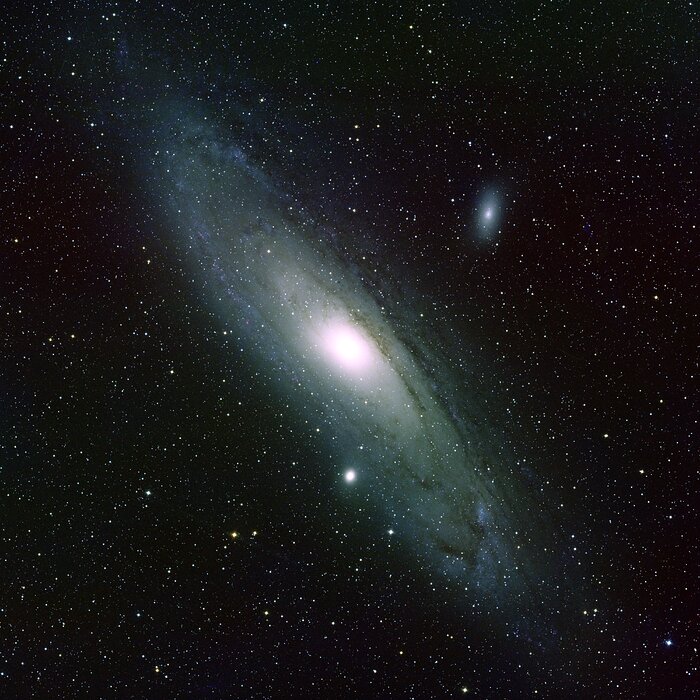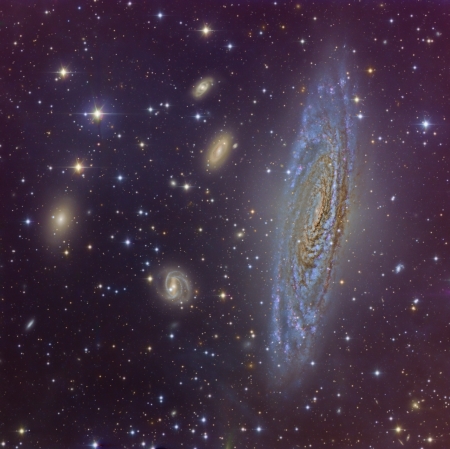johnnydeep wrote: ↑Wed Apr 12, 2023 8:40 pm
So, Andromeda is 2.5 Mly away, but NGC 206 is 3 Mly away? Perhaps if the near edge of Andromeda is at 2.5 Mly and NGC 206 is in the very far edge, and Andromeda is taken to be about 500 Kly wide (using a very expanded size estimate that includes spares halo stars). But that can't be right judging by Ann's image above showing NGC 206's position within Andromeda, and assuming that the "bottom" edge is the nearer edge.
Wikipedia wrote:
The Andromeda Galaxy (IPA: /ænˈdrɒmɪdə/), also known as Messier 31, M31, or NGC 224 and originally the Andromeda Nebula, is a barred spiral galaxy with the diameter of about 46.56 kiloparsecs (152,000 light-years) approximately 765 kpc (2.5 million light-years) from Earth and the nearest large galaxy to the Milky Way.
Exactly so, Johnny. According to Wikipedia, the distance to Andromeda is some 2.5 million light-years, and the diameter of Andromeda is "only" 152,000 light-years. Since NGC 206 resides in the disk of Andromeda, there is no way that it can be 500,000 light-years farther away from us than "Andromeda proper".
This is the correct "north is up" position of Andromeda in our night skies:
There are surprisingly few pictures that show Andromeda positioned like this. The NOIRLab picture above was obtained using one blue, one cyan and one red-orange filter, 435 nm,
███, 480 nm,
███, and 625 nm,
███, giving the picture a bluish cast. Note that you can faintly make out NGC 206 at lower right.
Anyway, this made me think - do we ever see spiral galaxies end on? We must do, but I can't think of a single one. Come to think of it, if they are round-ish anyway, they can't have narrow ends in the same way as if they were shaped as bars. So I guess they just look like flat pancakes, because of their arms.
In the picture below is the semi-flat pancake of NGC 7331, "standing up" in a fashion somewhat similar to Andromeda. Which side is closer to us? Actually, in NGC 7331, you can actually see which side is nearest. Surely you can too?
But what would the galaxy in the lower left panel below look like if we saw it end on?
Ann
 NGC 206 and the Star Clouds of Andromeda
NGC 206 and the Star Clouds of Andromeda







